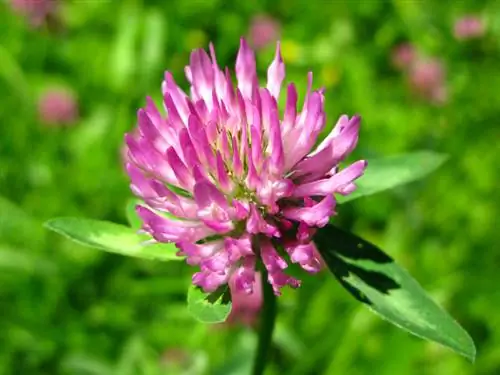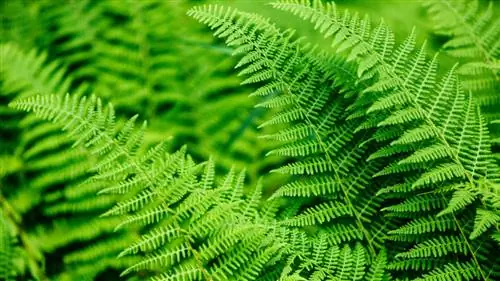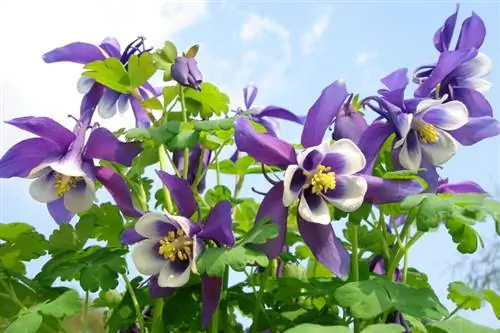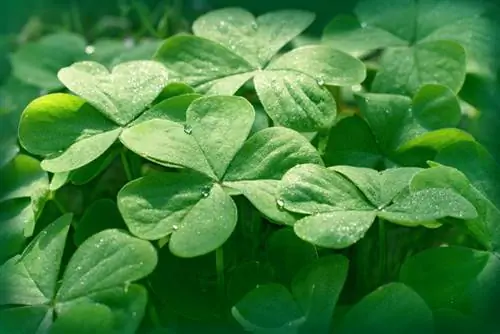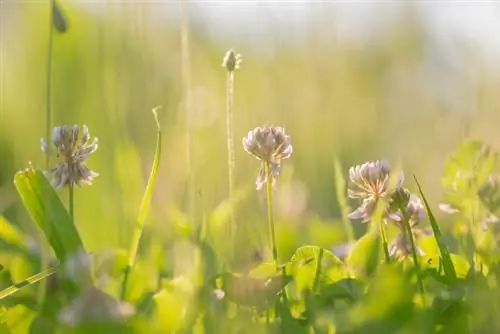- Author admin [email protected].
- Public 2023-12-16 16:46.
- Last modified 2025-01-23 11:20.
One of the special features of red clover is that for some gardeners the plant is a difficult weed to control, for others it is a valuable wild herb. If you want to do something good for bumblebees and other insects or use sprouts and flowers yourself in the kitchen, red clover is the ideal plant.
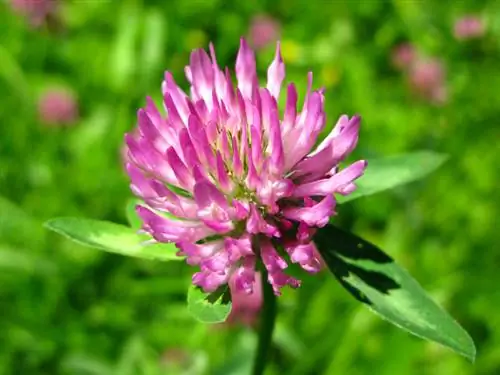
What is red clover?
Red clover (Trifolium pratense) is a perennial plant from the legume family that is native to Europe and Asia. It grows up to 70 cm high and blooms with red or pink flowers from April to October. Red clover is edible, medicinal and serves as pasture for bees.
Red Clover: A Profile
- Botanical name: Trifolium pratense
- Popular names: meadow clover, honey flower, field clover, bumblebee lust
- Plant family: legume
- Genus: Clover
- Origin: native plant
- Distribution: Europe, Asia
- Annual or perennial: perennial
- Height: up to 70 cm in cultivation, approx. 40 cm in nature
- Flowering period: April to October
- Flowers: red or pink, up to 100 individual flowers, diameter of the inflorescences up to 2 cm
- Fruits: 2 to 5 mm long pods, brown
- Leaves: 3 leaves per stem, 1.5 to 6 cm, smooth-edged, white spot in the middle
- Root: taproot, up to 2 m deep
- Propagation: seeds, root runners
- Use in the kitchen: sprouts, flowers for salads, tea
- Use as a medicinal plant: herb tea for menopausal and menstrual problems
- Use as a crop: livestock feed, green manure
- Ecological benefits: good bee pasture
- Toxicity: not poisonous
- Winter hardiness: absolutely hardy
- Preferred location: sunny to slightly shady, nutritious, moderately moist soil
Using red clover in the kitchen
Red clover sprouts are most commonly used in cooking. They are grown in germinators and, like cress, enjoyed as a topping on bread or in salads. The taste is less pronounced than that of cress.
The red flowers are also edible and taste mild and only slightly aromatic. They add color to flower salads and soups. They are also often used as decoration.
Use as a medicinal plant
Red clover is a medicinal plant that has been used in natural medicine since ancient times. It contains a number of active ingredients that are used, among other things, for inflammation and high blood lipid levels.
One of the special features of red clover is its high proportion of plant estrogens, which are usually taken as tea or in capsule form to relieve menopausal symptoms. However, there are currently no reliable studies that have actually been able to prove the effect.
Fighting red clover is difficult
Red clover is not wrongly considered a very annoying weed in the garden. Once it has spread in the beds or lawn, it is almost impossible to fight.
If cultivation in the garden is desired, a very deep root barrier should be ensured. In addition, the flowers must not develop pods to prevent self-sowing.
It is safer to sow red clover in pots for the kitchen. However, they have to be very deep because of the long taproots. There are germination devices for growing sprouts, so sowing them in the garden is not absolutely necessary.
Tip
Like all plants from the legume family, red clover must not be sown outdoors in locations where other members of the plant family have previously grown. The space should not be occupied by legumes for at least three years, preferably four.

